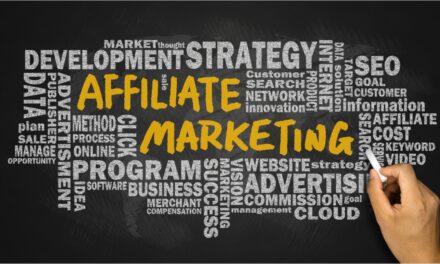Introduction
In today’s fast-paced digital world, businesses need to stay on top of their game to compete and thrive. One area where many businesses have found success is in email marketing, specifically by harnessing the power of email automation. As a digital marketer, I understand the importance of lead nurturing and retention for businesses. That’s why, in this blog post, I’ll be exploring the benefits of email automation in lead nurturing and retention, and sharing practical strategies to help you get the most out of your email marketing efforts.
I. Understanding Email Automation
Before we dive into the strategies, let’s first define email automation. Email automation is the process of sending targeted, personalized, and timely emails to your subscribers or customers without manual intervention. It is achieved through the use of various tools and platforms that automate the sending of emails based on predefined rules or triggers.
There are many tools and platforms available for email automation, and some of the most popular ones include Mailchimp, ActiveCampaign, and Sendinblue. Each of these platforms offers a unique set of features, so it’s essential to choose the one that aligns best with your business goals and budget.
The advantages of email automation over manual processes are numerous. With email automation, you can save time and resources, ensure consistency in your messaging, and provide personalized content that is more likely to engage your subscribers. Ultimately, this leads to higher open and click-through rates and better overall results from your email marketing campaigns.
II. Lead Nurturing with Email Automation
The importance of lead nurturing in the sales process cannot be overstated. Leads, or potential customers, need to be nurtured and guided through the sales funnel to ultimately convert into paying customers. Email automation is a powerful tool to help you achieve this goal.
A. Drip Campaigns
- A drip campaign is a series of pre-written emails that are automatically sent to subscribers over a specified period. The primary goal of a drip campaign is to provide valuable content and build trust with your subscribers, eventually guiding them towards conversion. For example, you could create a drip campaign to educate new subscribers about your products or services, offering valuable insights, tips, and resources along the way. By providing this valuable content, you’ll be nurturing your leads and increasing their likelihood of becoming customers.
B. Behavioral Triggers
- Behavioral triggers are actions taken by your subscribers, such as clicking on a link, downloading a resource, or making a purchase. By setting up your email automation to respond to these behavioral triggers, you can send timely and relevant content to your subscribers, further nurturing them through the sales process. For instance, if a subscriber clicks on a link to learn more about a specific product, you could set up an automated email to provide additional information, answer common questions, and offer a special discount to incentivize a purchase.
C. Personalization
- Personalizing your automated emails is crucial for engaging and nurturing your leads. By addressing your subscribers by their first name, customizing content based on their preferences, or sending emails based on their past behavior, you can create a more personalized and relevant experience. For example, if you know that a subscriber has shown interest in a particular product category, you can send them an automated email featuring related products or content. By tailoring your emails to your subscribers’ interests, you’re more likely to keep them engaged and guide them towards conversion.
To measure the success of your lead nurturing efforts, it’s essential to track key performance indicators (KPIs) such as open rates, click-through rates, and conversion rates. Analyzing your email engagement data will help you identify areas for improvement and optimize your email automation strategy for better results.
III. Customer Retention with Email Automation
Customer retention is just as important as acquiring new customers. It is more cost-effective to retain existing customers than to acquire new ones, and loyal customers are more likely to become brand advocates and refer new business to you. Email automation can play a significant role in improving customer retention.
A. Onboarding Emails
- Onboarding emails are designed to welcome new customers and guide them through the initial stages of using your product or service. These emails can help set expectations, provide essential information, and offer tips for getting the most value from their purchase. For example, you could create an automated onboarding email series that introduces new customers to your product’s features and shares helpful resources, such as how-to videos or user guides. By making the onboarding process smooth and enjoyable, you’ll be increasing the chances of retaining your new customers.
B. Re-engagement Campaigns
- Re-engagement campaigns are designed to win back customers who have become inactive or disengaged. By sending targeted, personalized, and timely emails, you can remind these customers of the value your product or service offers and encourage them to re-engage with your brand. For instance, you could set up an automated re-engagement campaign that targets customers who haven’t made a purchase or interacted with your brand in a certain period. The campaign could include a special offer, an update on new features, or simply a friendly reminder of the benefits they’re missing out on.
C. Customer Feedback and Reviews
- Collecting customer feedback and reviews is crucial for understanding your customers’ needs, improving your products or services, and building social proof. Email automation can help you gather this valuable information with minimal effort. For example, you could set up an automated email to request feedback or a review a few weeks after a customer has made a purchase. By providing an easy way for customers to share their experiences and opinions, you’ll gain valuable insights that can help you improve your offerings and, ultimately, retain more customers.
To measure the success of your customer retention efforts, you should track KPIs such as customer satisfaction scores, repeat purchase rates, and customer lifetime value. Analyzing this data will help you identify areas for improvement and adjust your email automation strategy accordingly.
IV. Best Practices for Email Automation
To maximize the effectiveness of your email automation efforts, it’s essential to follow some best practices:
A. List Segmentation
- Segmenting your email list based on factors such as demographics, interests, or past behavior can help you send more targeted and relevant content. This, in turn, leads to higher engagement and better results from your email campaigns.
B. Consistent and Relevant Content
- Ensure that your automated emails provide consistent and valuable content that aligns with your brand and meets your subscribers’ expectations. This will help you build trust and credibility with your audience, which is essential for lead nurturing and retention.
C. Timing and Frequency
- Finding the right balance in terms of timing and frequency is crucial for keeping your subscribers engaged without overwhelming them. Test different sending schedules and monitor your engagement metrics to determine the optimal timing and frequency for your audience.
D. Mobile-friendly Emails
- With a majority of people checking their emails on mobile devices, it’s essential to ensure that your automated emails are mobile-friendly. Use responsive design, concise copy, and clear calls-to-action to create an enjoyable and seamless mobile experience.
E. Testing and Optimizing Emails
- Regularly test and optimize your automated emails to ensure they’re performing at their best. Conduct A/B tests on elements such as subject lines, copy, and calls-to-action to identify what resonates most with your audience.
V. Integrating Email Automation with Other Marketing Channels
For a truly cohesive marketing strategy, it’s essential to integrate email automation with other marketing channels, such as social media, content marketing, and paid advertising. By connecting these channels, you can create a seamless and consistent experience for your audience, increasing the likelihood of conversion and retention.
For example, you can use email automation to promote your latest blog posts, encouraging subscribers to share them on social media. Similarly, you can leverage paid advertising to drive more traffic to your email sign-up forms and grow your subscriber list.
To integrate email automation with other marketing channels effectively, consider the following tips:
- Align your messaging and branding across all channels to create a cohesive customer experience.
- Use data from one channel to inform and optimize your campaigns on other channels. For instance, analyze the engagement data from your email campaigns to identify topics that resonate with your audience, and then create content for your blog or social media channels based on those insights.
- Leverage marketing automation platforms that support integrations with other tools and platforms. This will enable you to streamline your marketing efforts and gain a holistic view of your overall marketing performance.
Conclusion
In conclusion, email automation is a powerful tool for nurturing leads and retaining customers. By implementing the strategies and best practices discussed in this blog post, you can harness the full potential of email automation to drive growth and success for your business.
As a digital marketer, I encourage you to explore the benefits of email automation and integrate it into your marketing strategy. By doing so, you’ll save time, resources, and be well on your way to achieving better results from your email marketing efforts.











